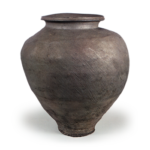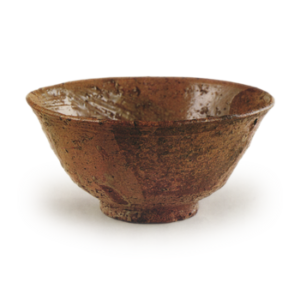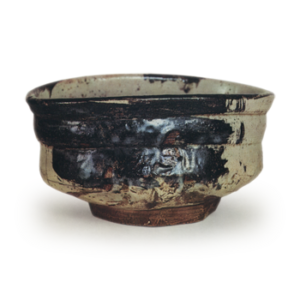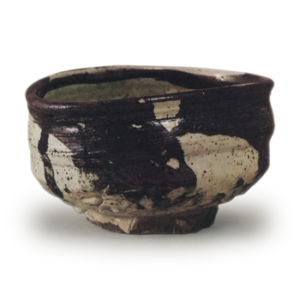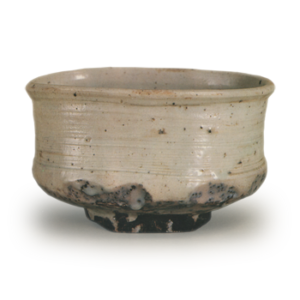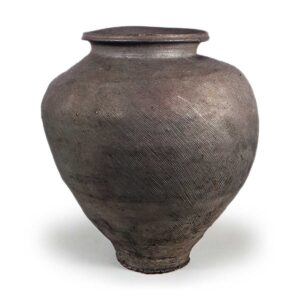
Tokyo National Museum.
Excavated from Sutra Mound, Sekiyama Shrine, Sekiyama-mura, Nakakubi-gun, Niigata
13th century, Height 39.0cm, Bore 19.5cm, Body 34.8cm, Bottom 12.0cm
Tokyo National Museum
The tip of the neck of the mouth is thickened to create a 1.2 cm wide rim band that curves inward, a technique that has been retained from Sue ware. Together with the small body shape with a stout base and shoulders, this jar can be considered to have been made in the early Kamakura period. The molding technique is exactly the same as that of the Suzu ware, but the quality of the clay and the mouthwork are reasons why this jar is considered to be of the Suzu type, but not of the Suzu itself. It is very well fired, with a thin layer of natural glaze on the shoulder. There is an inscription of “large” on the shoulder.

